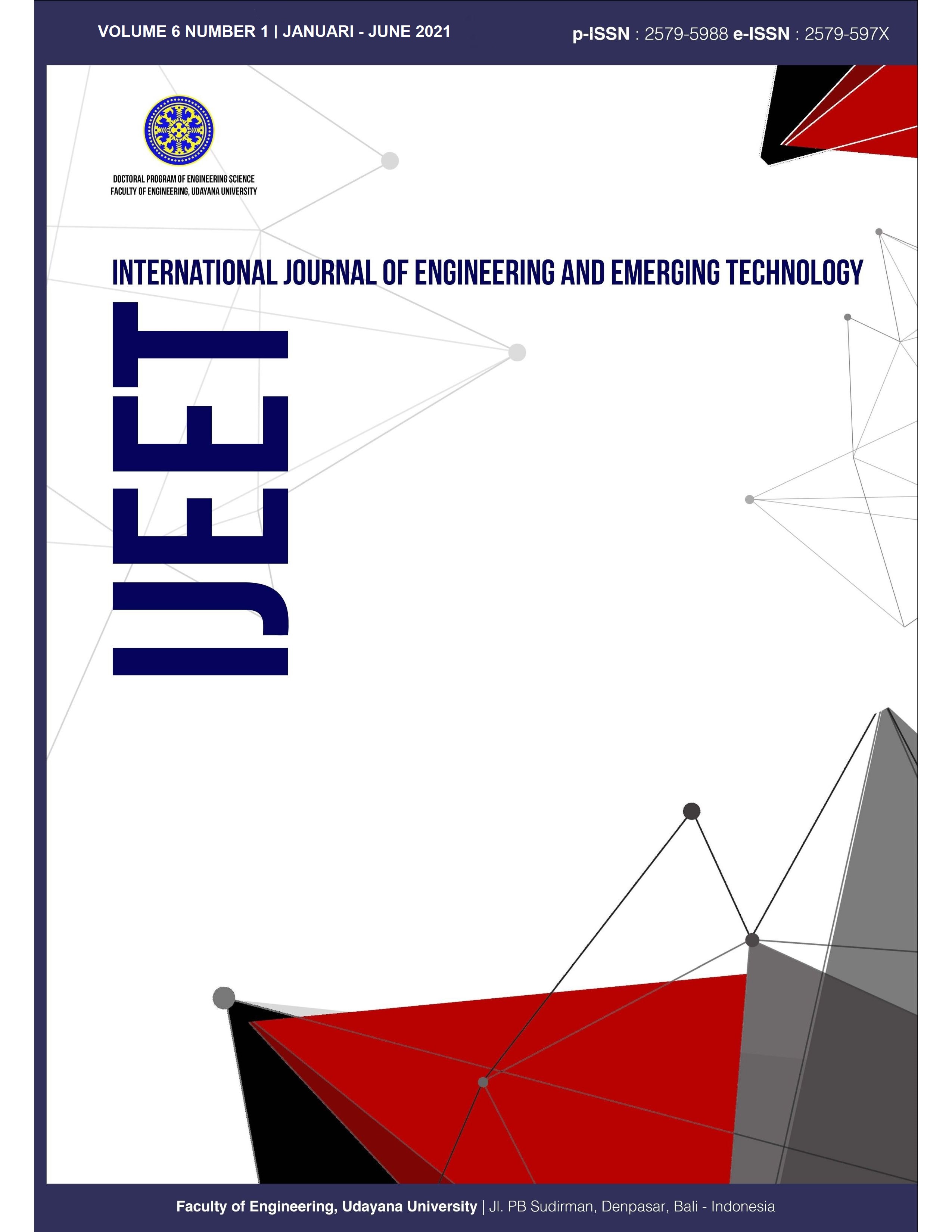Preferences For Controlling Occupational Health and Safety Risk In The Building Projects
Abstract
Abstract Building projects have the complexity and massive frequency of procurement that can trigger work accidents. Although different efforts have been made, there are still work injuries, one of which is caused by employees who are uncomfortable with the control measures being taken. The aim of this analysis is to find alternatives or solutions in controlling OHS regulation. In order to assess the degree of risk, risk analysis was performed by multiplying the probability value with the concequence. Risk management was performed by referring to the hierarchy of OHS risk control based on OHSAS 18001. Questionnaires were administered using the method of purposeful sampling to assess the choice of field workers and OHS officers for OHS risk management. 168 hazards were described in this study, 24 hazards (14.2%) were classified as low risk, 94 hazards (55.95%) as moderate risk, 49 hazards (29.17%) as high risk, and 1 hazard (0.6%) as very high risk. From the point of view of the OHS officer, the preference for OHS risk control in the very high-risk category was the administrative method, the personal protective equipment (PPE) method in the high-risk category, and the engineering controls were liable for the moderate and low risks. In the meanwhile, from the point of view of the field workers, the control preference in the very high risk category was by administrative method, by the personal protective equipment (PPE) method in the high and moderate risks, and by the engineering controls in the low risk category.
Downloads
References
[1] BPJS Ketenagakerjaan, “Tekan Angka Kecelakaan, BPJS Ketenagakerjaan Bagikan Helm,” www.bpjsketenagakerjaan.go.id, 2019. .
[2] Kementerian Pekerjaan Umum, Peraturan Menteri Pekerjaan Umum dan Perumahan Rakyat Nomor 05/PRT/M/2014 Tahun 2014 tentang Pedoman SMK3 Konstruksi Bidang Pekerjaan Umum. 2014.
[3] N. Holmes, S. M. Gifford, and T. J. Triggs, “Meanings of risk control in occupational health and safety among employers and employees,” Saf. Sci., 1998.
[4] D. Handoko, “Analisa pengaruh keselamatan dan kesehatan kerja (K3) pada pekerja bangunangedung penataan Ruang Kementerian Pekerjaan Umum,” Kontruksia, 2014.
[5] F. Pangkey, G. Y. Malingkas, and D. O. R. Walangitan, “PENERAPAN SISTEM MANAJEMEN KESELAMATAN DAN KESEHATAN KERJA (SMK3) PADA PROYEK KONSTRUKSI DI INDONESIA (Studi Kasus: Pembangunan Jembatan Dr. Ir. Soekarno-Manado),” J. Ilm. MEDIA Eng., 2012.
[6] G. A. P. C. Dharmayanti, G. N. P. S. Pramana, and G. Astawa, “Kendala Penerapan Sistem Manajemen Keselamatan Dan Kesehatan Kerja ( Smk3 ) Pada Kontraktor Di Bali,” J. Tek. Sipil, 2018.
[7] N. A. F. Rahmawati, Martono, Sugiharto, K. J. Setyono, and Parhadi, “Peningkatan Produktivitas Kerja Melalui Penerapan Program K3 Di Lingkungan Konstruksi,” Bangun Rekaprima, 2019.
[8] R. A. Machfudiyanto and Y. Latief, “A conceptual framework to development of construction safety culture in Indonesia,” in IOP Conference Series: Earth and Environmental Science, 2018.
[9] AS/NZS4360, “Risk Management Guidelines Companion to AS/NZS 4360:2004,” Nature, 2004.
[10] A. A. B. D. Widnyana, “Manajemen risiko keselamatan dan kesehatan kerja (k3) pada proyek pembangunan jambuluwuk hotel & resort,” 2016.
[11] E. Albrechtsen, I. Solberg, and E. Svensli, “The application and benefits of job safety analysis,” Saf. Sci., 2019.
[12] S. Ramli, “Sistem Manajemen Keselamatan & Kesehatan Kerja,” Dian Rakyat, Jakarta, 2010.
[13] R. Dabbagh and S. Yousefi, “A hybrid decision-making approach based on FCM and MOORA for 4 occupational health and safety risk analysis,” J. Saf. Reserach, 2019.
[14] OHSAS, “Sistem manajemen keselamatan dan kesehatan kerja Persyaratan,” 18001, pp. 1–19, 2007.
[15] H. Ponda and N. F. Fatma, “IDENTIFIKASI BAHAYA, PENILAIAN DAN PENGENDALIAN RISIKO KESELAMATAN DAN KESEHATAN KERJA (K3) PADA DEPARTEMEN FOUNDRY PT. SICAMINDO,” Heuristic, 2019.

 Indexed By
Indexed By







